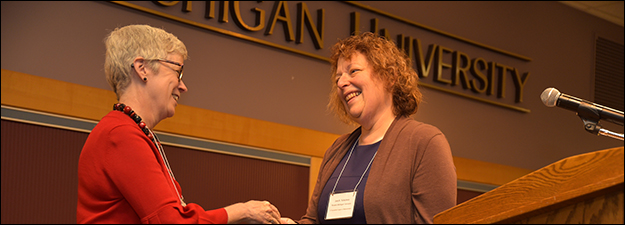Transformations in Late Antiquity and the Early Middle Ages I: Restructuring the World
Sponsoring Organization(s)
Dept. of History, Durham Univ.
Organizer Name
Helen Foxhall Forbes
Organizer Affiliation
Durham Univ.
Presider Name
Sarah J. Semple
Presider Affiliation
Durham Univ.
Paper Title 1
Restructuring Early Christianity: Chains of Succession and Epistolary Networks in Eusebius of Caesarea
Presenter 1 Name
James Corke-Webster
Presenter 1 Affiliation
Durham Univ.
Paper Title 2
Riding the Currents of Power: The Patriarchate of Jerusalem from Antiquity to the Crusades
Presenter 2 Name
Daniel Reynolds
Presenter 2 Affiliation
Univ. of Birmingham
Start Date
14-5-2017 8:30 AM
Session Location
Fetzer 2020
Description
This session aims to open up debates about the ways in which people in late antiquity and the early middle ages restructured the world around them, or perceived its restructuring to be taking place, at both macro-and micro-levels. James Corke-Webster examines how Eusebius refigured the structure of the Church and its relationship to Roman models of authority. Brian Buchanan uses burial evidence to explore the emerging post-Roman identities and political structures in the landscape of the early Anglo-Saxon kingdom of Northumbria. Daniel Reynolds investigates the Jerusalem Patiarchate, focusing on how its links with Byzantium and the early medieval West can inform us about the transition from late antiquity to the early middle ages.
Helen G. Foxhall Forbes
Transformations in Late Antiquity and the Early Middle Ages I: Restructuring the World
Fetzer 2020
This session aims to open up debates about the ways in which people in late antiquity and the early middle ages restructured the world around them, or perceived its restructuring to be taking place, at both macro-and micro-levels. James Corke-Webster examines how Eusebius refigured the structure of the Church and its relationship to Roman models of authority. Brian Buchanan uses burial evidence to explore the emerging post-Roman identities and political structures in the landscape of the early Anglo-Saxon kingdom of Northumbria. Daniel Reynolds investigates the Jerusalem Patiarchate, focusing on how its links with Byzantium and the early medieval West can inform us about the transition from late antiquity to the early middle ages.
Helen G. Foxhall Forbes


